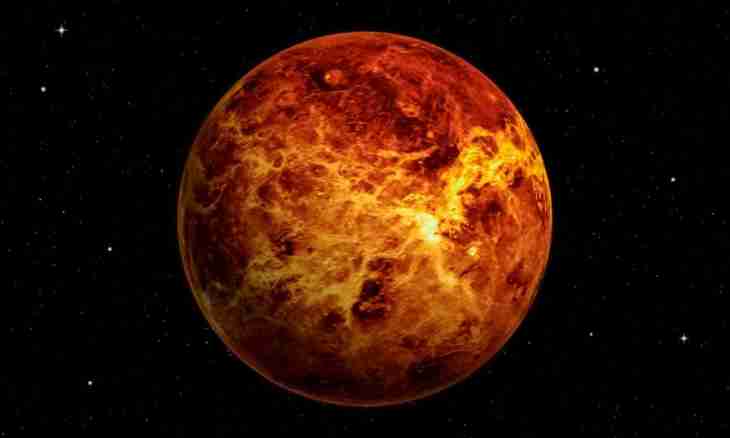Venus is considered the hottest planet of the Solar system, average temperature on it is 460 °C-480 of °C. Though this planet approaches Earth closer, than any other, dense atmosphere does not allow to see its surface.
Instruction
1. Venus has the weight, similar to Earth, and there is all at distance of 108.2 million km, but its average temperature — 470 °C while on Earth it only 7.2 °C. The fact is that on Venus there is greenhouse effect.
2. Unlike Earth, this planet has very dense atmosphere which is almost completely consisting of carbon dioxide, because of it its temperature increases approximately by 500 °C. Scientists assume that several millions years ago the atmosphere of Venus was not so dense, on the planet there were extensive oceans.
3. Greenhouse effect on Venus gradually drained its oceans, water evaporated that led to emergence of greenhouse effect. At temperature increase, carbon dioxide came out rocky breeds on the surfaces of the planet therefore overheating began. It is considered that this process could continue about two million years.
4. On Venus on the sky, dense clouds from sulfur dioxide move, sometimes there are rains which consist of sulfuric acid. It is considered that sulfuric acid is formed of sulfur dioxide which source are volcanoes of Venus. The sky of the planet has bright flavovirent color. Superficial breeds of Venus are close on the structure to terrestrial.
5. The surface of the planet reminds the desert with a set of craters and volcanoes. There are several very big volcanic objects which sizes exceed 100 km. Total number of volcanoes - 1600, outpouring of a lava on Venus happens much longer, than on Earth.
6. The blanket of the planet is very thin and weakened by high temperature, it gives to the melted lava it is a lot of opportunities to escape outside therefore on Venus the constant tectonic activity does not stop.
7. Venus has no satellites, and its orbit almost completely circular. At the same time the planet rotates aside, opposite to the movement on an orbit. It leads to the fact that the Venusian day proceeds 116.8 terrestrial days, and is day and night 58.4 times longer, than on our planet.
8. It is simpler to see Venus in the sky, than any other planet, the dense atmosphere perfectly reflects sunshine and does it bright. Venus is the third in brightness object in our sky. Its distinctive sign — equal white light. Every 7 months it becomes for several weeks the brightest object in the western part of the sky, and in three and a half months after that Venus begins to ascend before the Sun and looks as the bright sparkling early star.

